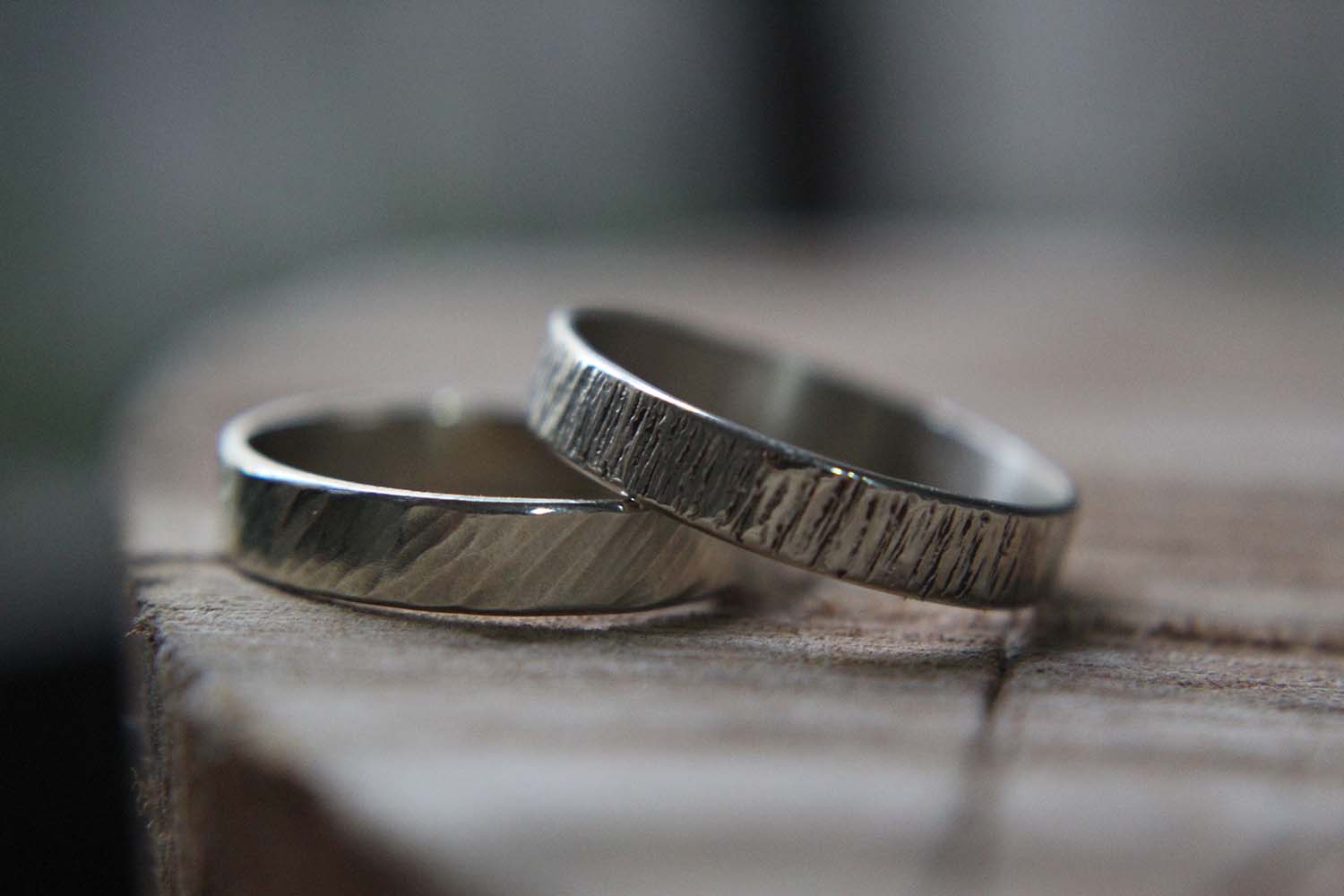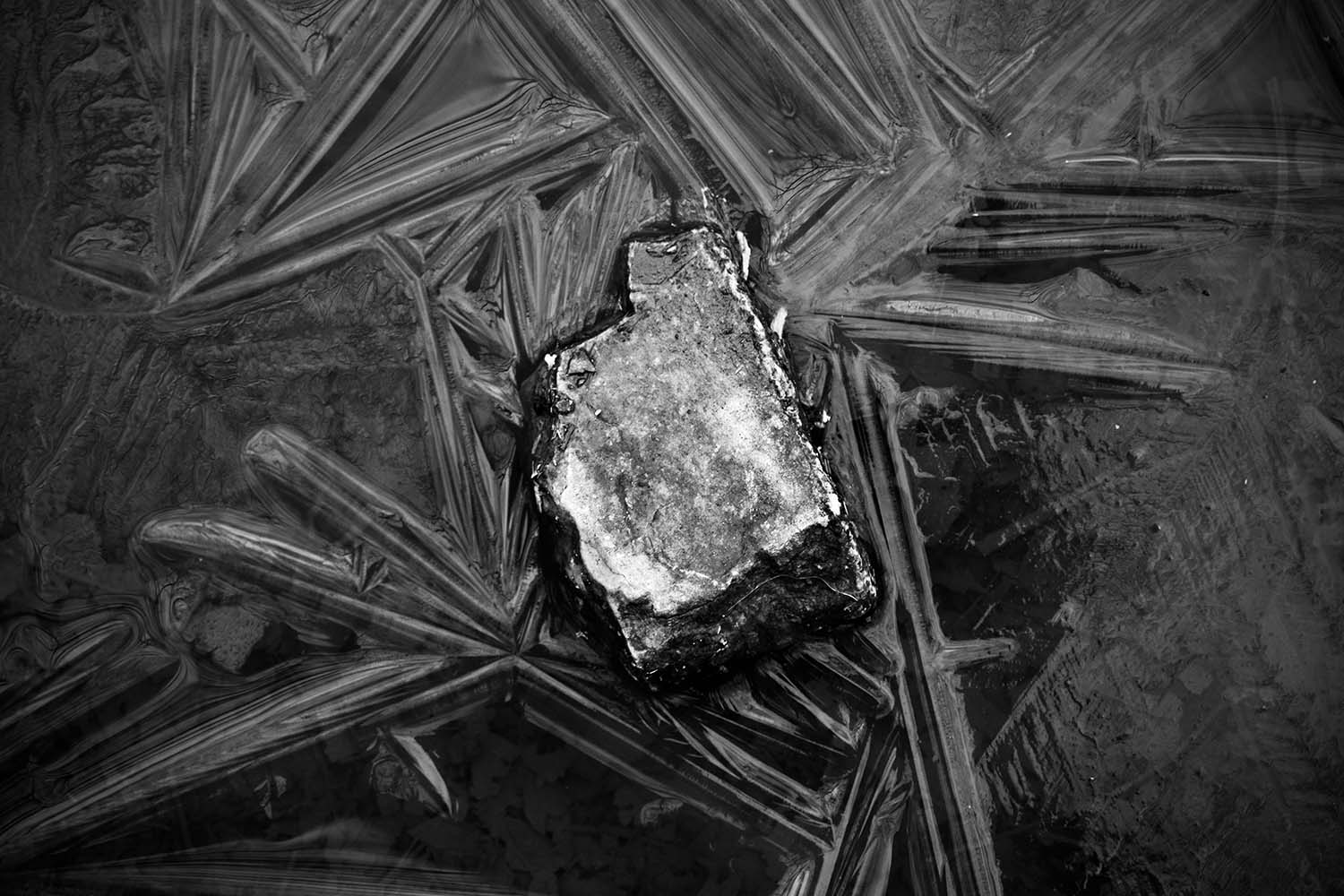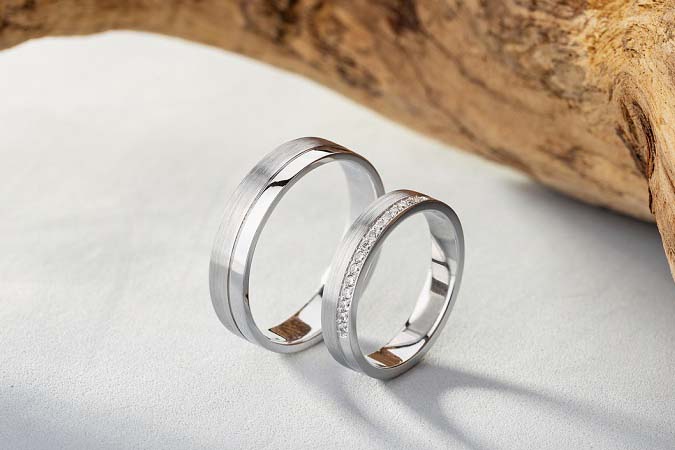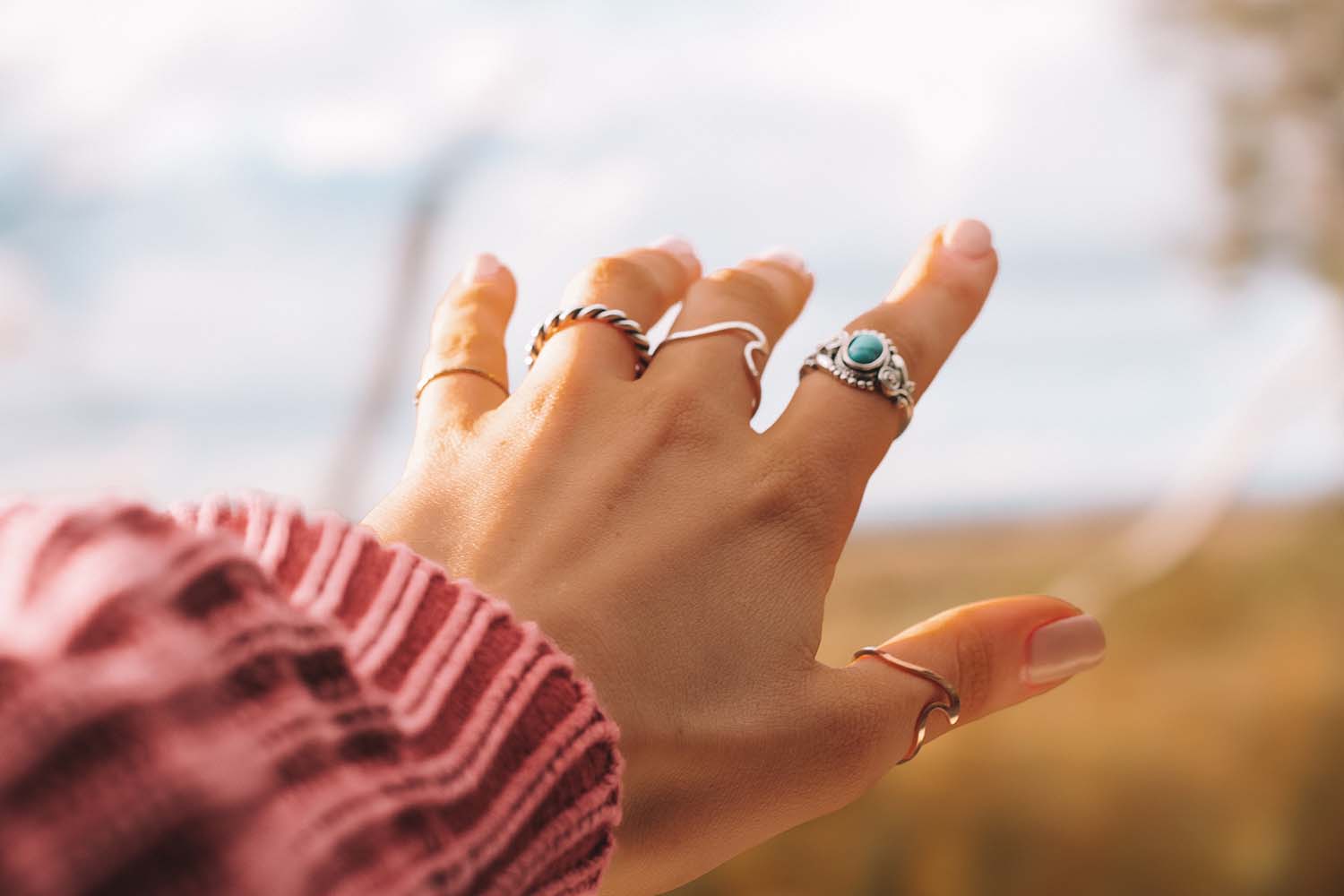Introduction to Silver
In the realm of health and wellness, the pursuit of natural remedies and alternative therapies has garnered increasing attention. Among these, silver—a precious metal with a rich history dating back centuries—has emerged as a subject of fascination due to its purported health benefits.
Beyond its traditional use in jewelry and tableware, silver has found its way into various medicinal practices and contemporary healthcare products. But what exactly are the benefits of silver, and how does it contribute to our well-being?
Throughout history, civilizations across the globe have recognized silver’s unique properties. Ancient cultures such as the Greeks, Egyptians, and Romans prized silver not only for its aesthetic appeal but also for its antimicrobial properties. Silver coins were commonly used to prevent water contamination, and silver utensils were believed to inhibit bacterial growth, offering a layer of protection against illness. Silver nitrate, a compound derived from silver, was historically utilized for its disinfectant and microbiocide properties in various medical applications, including bandages, wound-dressings, catheters, and medical instruments.
Fast forward to the present day, and the interest in silver’s health benefits persists, albeit with a modern scientific lens. Research into the antimicrobial properties of silver has revealed its potential to combat a wide range of pathogens, including bacteria, viruses, and fungi. This antimicrobial action arises from silver ions, which have the remarkable ability to disrupt vital cellular processes in microorganisms, ultimately leading to their demise.
In addition to its antimicrobial prowess, silver has also garnered attention for its role in wound care and healing. Silver chloride-based dressings and silver concentration in topical creams are commonly used in medical settings to prevent infections and promote the healing of cuts, burns, and ulcers. By creating an environment hostile to microbial growth, silver facilitates the body’s natural healing processes, allowing wounds to heal more effectively and reducing the risk of complications.
But the benefits of silver extend beyond its antimicrobial and wound-healing properties. Silver nanoparticles, tiny particles of silver with unique physical and chemical properties, have shown promise in various biomedical applications. From drug delivery systems to diagnostic tools, silver nanoparticles are being explored for their potential to revolutionize modern medicine.

Photo, Rodri Caruso.
Silver as a Precious Metal
Silver, with its lustrous sheen and timeless elegance, has long captivated humanity’s imagination.
Historically, silver has been prized for its beauty and rarity. It has been fashioned into exquisite jewelry, ornamental objects, and ceremonial artifacts by cultures across the globe. In ancient times, silver adornments signified status and power, adorning the royalty, nobility, and elite of society. Even today, silver jewelry remains a popular choice for its timeless appeal and affordability.
Beyond its aesthetic value, silver boasts remarkable physical properties that have made it indispensable in various industries. Its high electrical and thermal conductivity make it essential for electrical wiring, electronics, and solar panels. Silver’s reflective properties are exploited in mirrors, telescopes, and photographic film, while its antibacterial qualities find applications in medical devices, water purification, and wound dressings.
Moreover, silver has played a pivotal role in global trade and commerce throughout history. From the Silk Road to the Spanish galleon trade, silver has been a prized commodity exchanged for goods and services around the world. The widespread use of silver coins as currency in ancient civilizations contributed to the development of economies and facilitated international trade.
In addition to its practical applications, silver holds cultural and symbolic significance in many societies. It has been associated with purity, wisdom, and spirituality in various religious and cultural traditions. Silver objects feature prominently in rituals, ceremonies, and rites of passage, serving as tangible expressions of faith, devotion, and cultural heritage.
Furthermore, silver has inspired artists, craftsmen, and artisans to create masterpieces of unparalleled beauty and craftsmanship. From intricate filigree work to minimalist modern designs, silver’s versatility allows for endless creativity and expression. Whether in the form of sculptures, tableware, or decorative objects, silver artifacts showcase the ingenuity and artistry of human craftsmanship.
In today’s world, silver continues to shine bright as a precious metal with enduring value and appeal. Its timeless beauty, practical utility, and cultural significance ensure that silver remains a cherished and sought-after commodity, enriching our lives in myriad ways from wearing silver stud earrings to beautiful engagement rings.
In essence, silver is more than just a precious metal—it is a symbol of human creativity, ingenuity, and aspiration, reflecting our enduring quest for beauty, utility, and meaning.
What is Colloidal Silver Used For?
Colloidal silver is an aqueous solution containing tiny ions dissolved on the solid surface. This drug has been marketed to cure various health issues. Silver, which differs from colloidal silver in molecular terms, has been cultivated by medical practitioners since 1700s. In the past, it was alleged as being the cure-all for all diseases, including cancers.
Silver is often used as a disinfectant to treat wounds. When silver reacts with sulfur, it forms silver sulfide, a black compound that significantly reduces the oligodynamic effect of metallic silver, which is known to damage the metabolism of bacteria. This reaction is particularly relevant for colloidal silver products, as the presence of sulfur can negate their antimicrobial effectiveness due to the extreme insolubility of silver sulfide.
Modern colloidal silver spritzed or put on face and body. Some colloidal silver topical products should be administered orally (via mouth) or injection into the bloodstream. But colloidal silver does not have known functions within the organism.

Photo, Jonathan Borba.
Collidial Silver for Dietary Purposes
Collidial Silver has been used for various purposes, including dietary supplementation, due to beliefs surrounding its potential health benefits. However, it’s important to approach the topic with a critical eye, as the safety and efficacy of colloidal silver for dietary supplements purposes remain subjects of debate within the scientific and medical communities.
Proponents of colloidal silver assert that it possesses antimicrobial properties, suggesting that ingesting small amounts of colloidal silver could help boost the immune system and combat infections. They often cite historical anecdotes and testimonials as evidence of its effectiveness in treating a wide range of ailments, from colds and flu to more serious conditions like bacterial infections.
However, scientific evidence supporting the use of colloidal silver as dietary supplements is limited and conflicting. While colloidal silver use does indeed exhibit antimicrobial properties, the key question is whether ingesting colloidal silver in the amounts typically recommended is safe and effective.
One of the primary concerns surrounding colloidal silver is the risk of argyria, a condition characterized by a bluish-gray discoloration of the skin, mucous membranes, and eyes. Argyria occurs when silver accumulates in the body over time, usually as a result of prolonged or excessive exposure to silver compounds. While argyria is considered rare, cases have been reported in individuals who consumed colloidal silver regularly over extended periods.
Furthermore, the U.S. Food and Drug Administration (FDA) and other regulatory agencies have issued warnings against the use of colloidal silver for dietary purposes. They emphasize that there is insufficient evidence to support its known function of safety and efficacy, and they caution against the potential risks, including argyria and other adverse effects.
Despite these warnings, colloidal silver continues to be marketed as a dietary supplement and alternative remedy by some manufacturers and proponents. Its long term use remains a topic of interest and controversy within the realm of alternative medicine and holistic health.
How Silver can Help to Maintain Emotional Balance?
Silver holds a place of significance in the realm of emotional well-being and balance. While the notion of silver’s influence on emotions may seem esoteric, cultural and historical associations, as well as emerging scientific findings, offer intriguing insights into its potential impact.
Throughout history, silver has been imbued with symbolic meaning and attributed with qualities that extend beyond its physical attributes. In various cultures, silver is associated with purity, tranquility, and emotional harmony. From ancient civilizations to modern societies, silver has been cherished for its calming influence and believed to possess subtle energetic properties that promote inner peace and emotional equilibrium.
In traditional healing practices such as Ayurveda and Traditional Chinese Medicine, silver is sometimes used as a therapeutic tool to balance the body’s energy systems and restore emotional harmony. It is thought to have a cooling and calming effect on the mind and spirit, helping to alleviate stress, anxiety, and emotional tension.
Moreover, silver has a long history of use in rituals and ceremonies aimed at promoting spiritual well-being and emotional healing. From wearing silver jewelry to incorporating silver objects into sacred rituals, many cultures have embraced silver as a symbol of purity, protection, and emotional balance.
While scientific research on the specific effects of silver on emotional well-being is limited, there is growing interest in the field of vibrational medicine, which explores the potential influence of subtle energies on health and healing. Some proponents of vibrational medicine suggest that metals like silver may emit vibrational frequencies that interact with the body’s energy field, affecting emotional states and overall well-being.
Furthermore, the practice of mindfulness and meditation, which are increasingly recognized for their positive effects on emotional health, may be complemented by the presence of silver. Whether in the form of silver jewelry worn during meditation or silver objects used as focal points for mindfulness practices, the symbolism and association of silver with emotional balance can enhance the effectiveness of these practices.
In essence, while the influence of silver on emotional balance may be subtle and subjective, its cultural significance and historical associations suggest that it holds a special place in our collective consciousness as a symbol of tranquility, purity, and emotional harmony. Whether as a cherished heirloom passed down through generations or as a contemporary adornment worn for its aesthetic appeal, silver continues to inspire and uplift, reminding us of the enduring connection between mind, body, and spirit.

Photo, Ryan Moreno.
The Potential Future of Silver in Health
The potential future of silver in health holds promise for innovative advancements in medical science and healthcare, particularly through the integration of silver-containing dressings. These dressings, known for their antibacterial properties, are increasingly being recognized for their effectiveness in treating skin ulcers and wounds, especially diabetic ulcers.
While silver has been utilized for its antimicrobial properties and wound-healing capabilities for centuries, the development of silver-containing dressings represents a significant advancement in the application of silver in medical treatments. Ongoing research and technological developments are expanding its horizons and opening new avenues for application, further solidifying the role of silver in advanced wound care. Here are some areas where the future of silver in health may unfold:
Advanced Wound Care
Silver-based dressings and wound care products have already revolutionized the treatment of burns, ulcers, and chronic wounds. Future innovations may involve the development of smart wound dressings equipped with sensors to monitor healing progress and deliver tailored treatments. These dressings could incorporate silver nanoparticles for enhanced antimicrobial efficacy and accelerated wound healing.
Implantable Medical Devices
Silver’s biocompatibility and antimicrobial properties make it an attractive material for implantable medical devices, such as orthopedic implants, pacemakers, and catheters. Future advancements may involve using silver-coated or silver-infused materials to reduce the risk of infections associated with implantation procedures, thereby improving patient outcomes and reducing healthcare costs.
Drug Delivery Systems
Silver nanoparticles hold promise as carriers for targeted drug delivery in the treatment of cancer, infectious diseases, and other medical conditions. Future research may focus on optimizing the design and functionality of silver-based nanocarriers to enhance drug stability, bioavailability, and therapeutic efficacy while minimizing side effects.
Antiviral Applications
In light of the ongoing global health challenges posed by viral pandemics, there is growing interest in exploring silver’s potential as an antiviral agent. Preliminary studies suggest that silver nanoparticles may exhibit antiviral activity against a variety of viruses, including influenza, HIV, and coronaviruses. Future research may delve deeper into the mechanisms of silver’s antiviral action and its applications in developing novel antiviral therapies and preventive strategies.
Diagnostics and Imaging
Silver nanoparticles have unique optical properties that make them valuable tools for diagnostics and imaging in medical diagnostics. Future developments may involve using silver based contrast agents for advanced imaging techniques, such as photoacoustic imaging and surface-enhanced Raman spectroscopy, enabling early detection and characterization of diseases with high sensitivity and specificity.
Regenerative Medicine
Silver nanoparticles have shown potential in promoting tissue regeneration and wound healing through their antimicrobial and anti-inflammatory effects. Future research may explore the use of silver-based biomaterials in regenerative medicine applications, such as tissue engineering, organ transplantation, and stem cell therapies, to enhance tissue regeneration and repair.
In conclusion, the future of long term colloidal silver use in health is filled with exciting possibilities for improving patient care, advancing medical technologies, and addressing global health challenges. By harnessing the unique properties of silver and leveraging interdisciplinary approaches, researchers and healthcare professionals can continue to explore innovative solutions that harness the potential of this remarkable metal to enhance human health and well-being.

Photo, Sid Suratia.
Sterling Silver vs Colloidal Silver
Let’s unravel the differences between sterling silver and colloidal silver, two distinct forms of silver with unique characteristics and uses.
Sterling Silver
Sterling silver is a durable alloy composed of 92.5% pure silver and 7.5% other metals, typically copper. This composition gives sterling silver the strength and durability needed for jewelry and other decorative items. Here’s what you need to know about sterling silver:
Composition
As mentioned, sterling silver is primarily made of silver mixed with copper or other metals. This combination enhances its strength and durability, making it suitable for everyday wear.
Uses
Sterling silver is most commonly used in jewelry making, including rings, necklaces, bracelets, and earrings. It’s also used for tableware, decorative items, and even musical instruments.
Tarnish
One drawback of sterling silver is that it can tarnish over time when exposed to air and moisture. However, it’s important to learn how to clean sterling silver, as regular cleaning and maintenance can help keep it looking shiny and beautiful.
Sterling Silver FAQs
What is sterling silver? – People want to know what constitutes sterling silver, its composition, and how it differs from other types of silver.
How can I tell if something is real sterling silver? – Authenticity is important, so people seek information on how to distinguish real sterling silver from imitations or other types of silver.
How should I care for sterling silver jewelry or items? – Maintenance is crucial to preserve the shine and condition of sterling silver, so people often inquire about proper cleaning and storage techniques.
Does sterling silver tarnish? – Tarnishing is a common concern, and people want to know why it happens and how to prevent or remove it.
Is sterling silver hypoallergenic? – Many individuals have allergies or sensitivities to certain metals, so they want to know if sterling silver is safe for them to wear.
What is the value of sterling silver? – Whether for investment purposes or determining the worth of heirlooms, people want to understand the market value and factors influencing the price of sterling silver.
Are there different grades of sterling silver? – Some may wonder if there are variations in quality or purity within the category of sterling silver.
Can sterling silver jewelry be worn every day? – People often ask about the durability of sterling silver and whether it’s suitable for everyday wear.
What are some common uses for sterling silver? – People are curious about the various applications of sterling silver beyond jewelry, such as flatware, decorative items, or even medical uses.
Is sterling silver a sustainable choice? – With growing awareness of environmental and ethical considerations, some individuals inquire about the eco-friendliness and ethical sourcing of sterling silver.
Colloidal Silver
Colloidal silver, on the other hand, is a suspension of tiny silver particles in a liquid base, typically water. It has been used for various purposes, including dietary supplementation and topical applications. Here are some key points about colloidal and silver salts:
Composition
Colloidal silver consists of microscopic silver particles dispersed in water or another liquid. The concentration of silver particles can vary depending on the product.
Uses
Colloidal silver has been touted for its antimicrobial properties and has been used historically as an alternative remedy for various health conditions, including infections, colds, and flu. It’s available in liquid form for oral consumption or as a topical solution for skin conditions.
Safety Concerns
While some people advocate for the use of colloidal silver as a dietary supplement or topical treatment, its safety and efficacy remain subjects of debate. There are concerns about potential side effects, such as argyria (a condition characterized by skin discoloration), as well as the lack of scientific evidence supporting its use.
In summary, sterling silver and colloidal silver are two distinct forms of silver with different compositions, uses, and characteristics. Sterling silver is primarily used for jewelry and decorative items, while colloidal silver is often used for its purported antimicrobial properties.
It’s essential to understand the differences between the two metals and exercise caution when considering the use of colloidal silver for health purposes, as its safety and effectiveness are not well-established.
Colloidal Silver FAQs
What is colloidal silver? – People want to understand what colloidal silver is, its composition, and how it differs from other forms of silver.
What are the supposed health benefits of colloidal silver? – Many seek information on the claimed medicinal properties of colloidal silver, such as its use as an antimicrobial agent or immune booster.
Is colloidal silver safe? – Safety concerns are prevalent, and people want to know about potential risks, side effects, and the safety of long-term use.
How is colloidal silver made? – Individuals may be curious about the production process of colloidal silver and whether it can be made at home.
What conditions or ailments can colloidal silver be used for? – People inquire about specific health issues or conditions for which colloidal silver is purportedly beneficial, such as infections, wounds, or respiratory problems.
Can colloidal silver be used topically or internally? – There’s often interest in the various administration methods of colloidal silver, including oral ingestion, topical application, or inhalation.
Are there any scientific studies supporting the use of colloidal silver? – Skeptical individuals may seek evidence-based information on the efficacy of colloidal silver and whether there are any credible scientific studies supporting its use.
What are the potential interactions with medications or other substances? – Concerns about potential interactions with medications or supplements are common, and people may want to know about possible contraindications.
Is colloidal silver regulated by health authorities? – Regulatory questions arise, and people may inquire about the legal status of colloidal silver, including whether it’s approved for medical use by health authorities.
Are there any alternatives to colloidal silver for the same purposes? – Some individuals may seek alternative treatments or remedies with similar purported benefits to colloidal silver but with potentially fewer risks.

Sterling Silver Rings
A go-to choice for fashionistas and jewelry lovers alike, their timeless elegance, affordability, and versatility make them a staple in any jewelry collection. Whether adorned with intricate designs or showcasing minimalist chic, sterling silver rings offer a touch of sophistication for any occasion, from casual outings to formal affairs.
With styles ranging from classic to contemporary, it’s no wonder that sterling silver rings have captured the hearts of fashion-conscious individuals around the globe.
Silver Nanoparticles and their Use
Now we know that nanoparticles sound like something out of a sci-fi movie, but trust me, these tiny particles pack a big punch, especially when it comes to their uses.
So, what exactly are silver nanoparticles? Well, picture it like this: take a speck of silver and shrink it down to a tiny, tiny size—like, smaller than a grain of sand. That’s basically what a silver nanoparticle is—a super tiny speck of silver, but with some pretty awesome properties.
One of the coolest things about silver nanoparticles is their ability to kick some serious microbial butt. Yep, you heard that right—these little guys are like tiny superheroes when it comes to fighting off bacteria, viruses, and fungi. That’s why you’ll find them in all sorts of products, from wound dressings and antibacterial coatings for medical devices to socks and clothing with antimicrobial properties. They’re basically the secret weapon in the battle against germs!
But wait, there’s more! Silver nanoparticles aren’t just good for keeping nasty bugs at bay—they’re also handy in other ways, too. For example, scientists are exploring their use in things like drug delivery systems, where they can help deliver medications to exactly where they’re needed in the body. Plus, they’re being investigated for their potential role in diagnostic tests and even cancer treatment. Talk about versatile!
Of course, like with anything super high-tech, there are still some questions and concerns to figure out, especially when it comes to safety and environmental impact. But overall, silver nanoparticles are shaping up to be pretty amazing little helpers in all sorts of applications.

Photo, Gardie Design & Social Media Marketing.
Silver FAQS
What does silver do to the body?
First and foremost, silver boasts remarkable antimicrobial properties that have been recognized for centuries. When in contact with bacteria, viruses, or fungi, ions disrupt their cellular processes, inhibiting their growth and replication. This innate ability to ward off microbial invaders makes silver a valuable ally in maintaining overall health and well-being, whether it’s in the form of its antibacterial properties, coatings on medical devices, or even colloidal silver supplements purported to support immune function. Silver dissolves readily into these solutions, releasing ions that combat pathogens effectively.
But silver’s influence doesn’t stop there—this versatile metal has also found its way into the realm of holistic health and wellness. Some believe that wearing silver jewelry can have subtle energetic effects on the body, promoting emotional balance, tranquility, and spiritual alignment. Whether it’s the calming presence of a silver necklace or the grounding energy of a silver ring, many cherish silver for its ability to soothe the soul and uplift the spirit.
Moreover, these nanoparticles, with their unique properties and potential applications in biomedicine, offer exciting possibilities for the future of healthcare. From targeted drug delivery systems to advanced diagnostic tools, researchers are exploring innovative ways to harness the power of silver to improve patient outcomes and enhance medical technologies.
However, it’s essential to approach silver with caution and respect, recognizing both its benefits and potential risks. While silver’s antimicrobial properties can be beneficial, excessive exposure to silver, particularly in colloidal form, may pose health risks, including argyria—a rare condition characterized by skin discoloration. As with any substance, moderation and informed decision-making are key.
Is silver toxic?
Silver itself is not considered highly toxic to humans in normal exposure levels. In fact, it’s categorized as a “low-toxicity” metal. However, like many substances, it can become toxic if ingested or exposed to the body in excessive amounts.
The primary concern regarding silver toxicity typically arises from prolonged exposure to silver compounds or from ingesting large quantities of silver, particularly in forms such as colloidal silver. Ingesting colloidal silver, for example, can lead to a condition called argyria, where silver accumulates in the body’s tissues and causes a bluish-gray discoloration of the skin, mucous membranes, and even internal organs. Argyria is generally considered a cosmetic concern rather than a serious health threat, but it can be permanent.
In addition to argyria, excessive exposure to silver can also lead to other health issues such as argyrosis (affecting the eyes) and systemic toxicity. However, these cases are relatively rare and often associated with prolonged or excessive exposure, not simply wearing a silver friendship necklace.
What is silver bromide?
Silver bromide is a chemical compound composed of silver and bromine, with the chemical formula AgBr. It is a light-sensitive compound commonly used in traditional photography as a component of light-sensitive materials such as film and photographic paper.
When silver bromide is exposed to light, it undergoes a chemical reaction that results in the formation of metallic silver. This reaction is the basis of photography, where light exposure creates an invisible latent image on the light-sensitive material, which can then be developed to produce a visible image.
While silver bromide was widely used in traditional photography, its use has decreased with the advent major use of digital photography. However, it still holds significance in certain niche applications and is valued for its role in the history of photography.
What are some typical colloidal silver products?
Common colloidal silver products include:
Colloidal Silver Solutions: These are liquid suspensions of silver particles in distilled water. They are often sold in bottles with dropper caps for oral consumption or topical application.
Colloidal Silver Gels: Gel formulations containing colloidal silver are used for topical applications, such as wound care, skin conditions, or as an antimicrobial agent.
Colloidal Silver Sprays: Sprays containing colloidal silver are convenient for topical use on skin or surfaces, offering antimicrobial properties.
Colloidal Silver Creams or Ointments: Similar to gels, creams and ointments containing colloidal silver are used for topical applications to promote wound healing or address skin issues.
Colloidal Silver Nasal Sprays: These sprays are designed for nasal irrigation or for delivering colloidal silver to the nasal passages to help with sinus issues or nasal congestion.
Colloidal Silver Lozenges or Oral Drops: Some products combine colloidal silver with other ingredients in lozenges or oral drops for oral use, often marketed for immune support or throat health.
Colloidal Silver Soaps: Soaps infused with colloidal silver are used for cleansing the skin and may offer additional antimicrobial benefits.
Colloidal Silver Pet Products: Colloidal silver products formulated specifically for pets, including solutions, sprays, or gels, are available for various applications such as wound care, ear infections, or skin conditions.
What are the healing benefits of silver?
The healing benefits of silver stem primarily from its remarkable antimicrobial properties, which enable it to inhibit the growth of bacteria, viruses, and fungi. Silver is commonly used in wound care to prevent infections and promote healing, with silver-based dressings and topical creams proving effective in treating an infected wound, cuts, burns, and ulcers.
Additionally, most silver nanoparticles show promise in various biomedical applications, including drug delivery systems, diagnostic tools, and regenerative medicine.
While the precise mechanisms underlying silver’s healing effects continue to be studied, its antibacterial properties and ability to create an environment hostile to microbial growth and support the body’s natural healing processes underscores its value in healthcare.
What are the medicinal properties of silver?
Alright, let’s break it down in plain English! So, silver isn’t just about shiny jewelry and fancy tableware—it’s got some serious medicinal mojo too. Here’s the lowdown:
First off, silver is like a superhero when it comes to fighting off germs. It’s got this amazing ability to kill bacteria, viruses, and fungi, which makes it perfect for keeping wounds clean and preventing infections. That’s why you’ll find silver in all sorts of medical stuff, like dressings, creams, and even in some medical devices.
But wait, there’s more! Silver nanoparticles, which are like teeny tiny bits of silver, are causing a stir in the world of medicine. These little guys are showing promise in all kinds of cool stuff, like delivering drugs right where they’re needed in the body, helping with diagnostics, and even helping to regrow tissues.
Now, I know what you’re thinking—how does silver do all this magical stuff? Well, it’s all about those ions. When silver comes into contact with bacteria or other nasty stuff, it releases ions that mess with their insides, basically shutting them down and stopping them from multiplying. It’s like silver’s secret weapon against germs!
So, whether it’s keeping your cuts clean, fighting off infections, or even helping with some high-tech medical treatments, silver’s got your back in the world of medicine.
Is it safe to take silver daily?
Taking silver every day might sound like a good idea, considering its rep for fighting off germs and all, but there’s a catch. See, while silver can be helpful in small doses, going overboard with it isn’t exactly a great plan.
Here’s the deal: Some folks swear by colloidal silver—a liquid form of silver—as a daily supplement to boost their immune system. But here’s where things get tricky—too much silver can actually build up in your body over time, leading to a condition called argyria. It’s rare, but it can turn your skin a funky shade of blue-gray, which isn’t exactly a fashion statement.
Plus, there’s still a lot we don’t know about the long-term effects of taking silver every day. Sure, it’s great for fighting off germs, but what about other stuff? We’re talking potential side effects, like messing with your gut bacteria or interacting with other medications you might be taking. It’s a bit of a gray area, pun intended.
So, here’s the bottom line: Taking silver as a daily supplement might sound tempting, but it’s probably best to err on the side of caution. If you’re considering it, chat with your doc first to weigh the pros and cons.
What is the chemical name for Ag?
You know how all the elements on the periodic table have fancy names? Well, silver is no exception. You might have heard folks toss around the abbreviation “Ag” when talking about silver, but what’s the deal with that?
Here’s the scoop: “Ag” is actually the chemical symbol for silver, derived from its Latin name “argentum.” Yep, it’s as simple as that! While most elements have chemical symbols that seem to come out of left field (looking at you, “Fe” for iron and “Na” for sodium), silver keeps it straightforward with a symbol that’s pretty much just a shortened version of its name.
So, the next time someone throws “Ag” into a conversation, you can impress them with your chemistry knowledge by casually dropping the fact that it’s the chemical symbol for everyone’s favorite shiny metal—silver!
Should Pregnant Women Avoid Silver?
So you’ve got a bun in the oven and every little thing matters, right? Now, you might be wondering, what’s the deal with silver during pregnancy? Well, here’s the scoop:
While silver might be shiny and pretty, it’s probably best to steer clear of it when you’re expecting. Why, you ask? Well, it all comes down to a little something called argyria. This fancy term basically means your skin can turn a not-so-flattering shade of blue-gray if you’re exposed to too much silver. And let’s be real, nobody wants to rock the Smurf look, especially when you’ve got a baby bump to show off!
Now, before you start panicking and tossing out all your silver jewelry, take a deep breath. The good news is that getting a little bling on occasion probably won’t turn you into a blueberry. It’s more about avoiding excessive exposure to silver, like drinking or using products with colloidal silver on the regular.
So, when in doubt, it’s always a good idea to chat with your doc if you’re unsure about something during pregnancy—including your bling collection. After all, you’ve got enough to worry about without adding “blue skin” to the list, right?
Conclusion – The Benefits of Silver Are Fairly Distinct
In conclusion, it’s pretty clear that silver isn’t just for looking pretty, whether sterling silver or colloidal silver, this stuff has some serious health benefits too! From its powerful antimicrobial properties to its potential role in wound healing and beyond, silver is like a superhero for your health. Whether you’re slapping on a silver-infused bandage or sipping on a little colloidal silver to ward off a cold, there’s no denying that silver packs a punch when it comes to keeping you feeling your best.
But hey, let’s not forget to use a little common sense here. While silver can be super helpful, it’s not a cure-all, and going overboard with it isn’t exactly a great idea. Whether you’re considering silver as a dietary supplement or exploring its use in medical treatments, it’s always a good idea to chat with your doc first. After all, they’ve got the inside scoop on what’s safe and what’s not, and you definitely don’t want to end up with more problems than you started with!
So, next time you’re admiring a shiny piece of silver jewelry or reaching for a silver-infused product, remember that it’s not just about looking good—it’s about feeling good too. With its unique blend of beauty and benefits, silver is truly a treasure worth cherishing in more ways than one.








